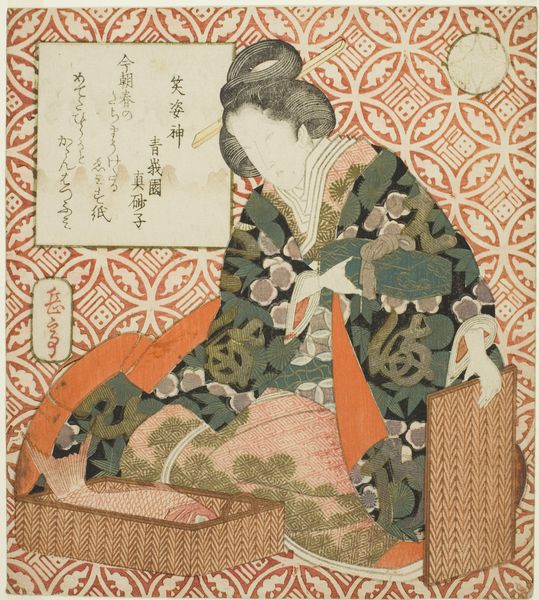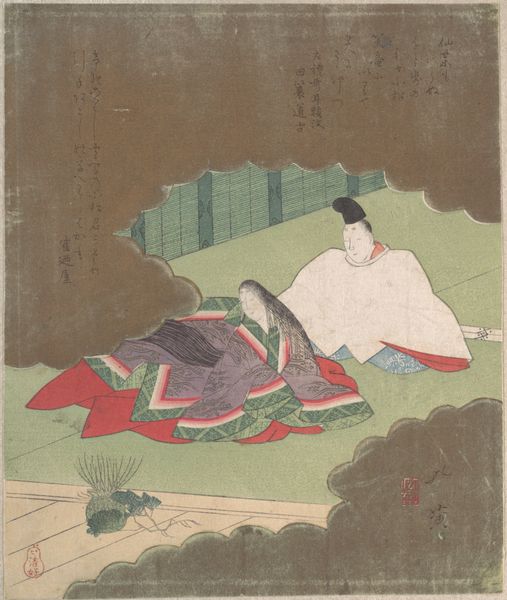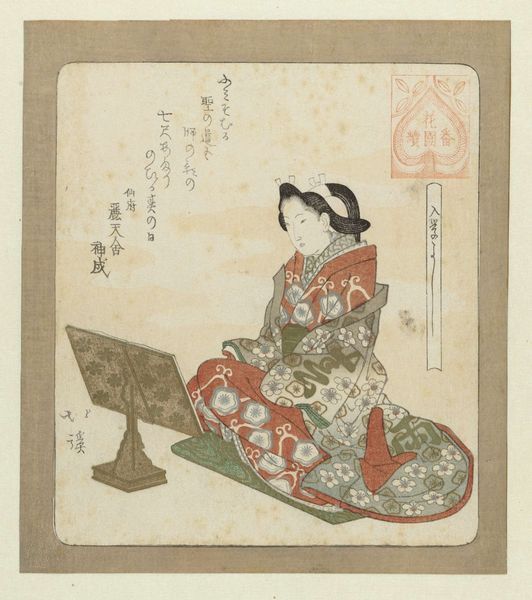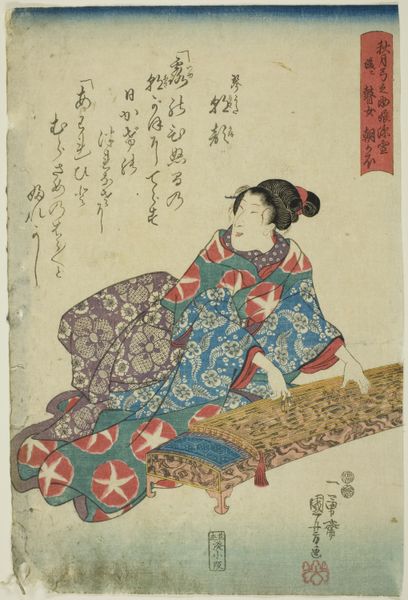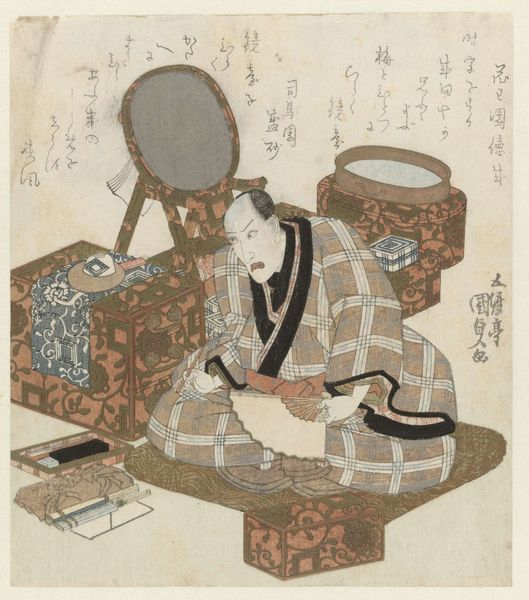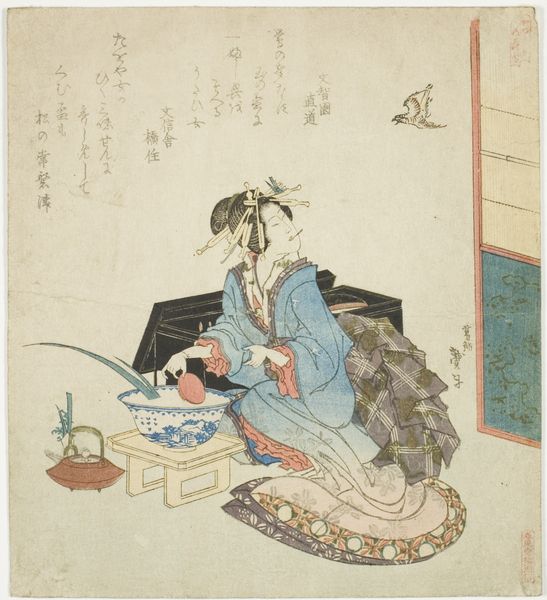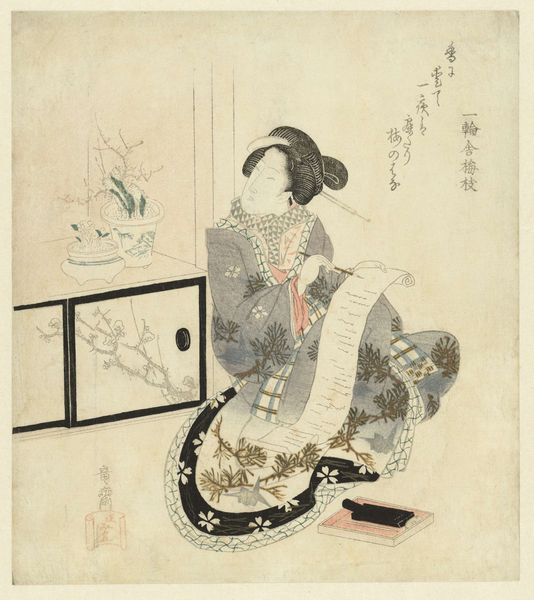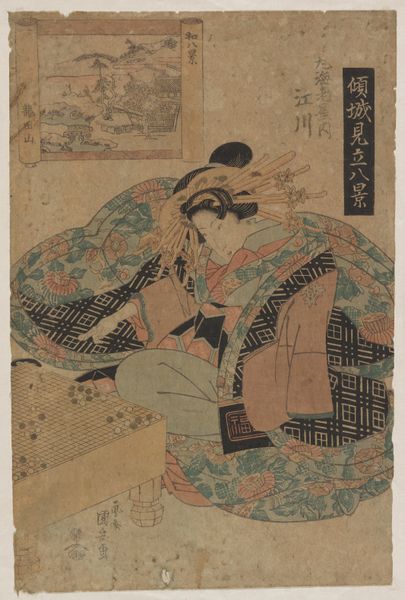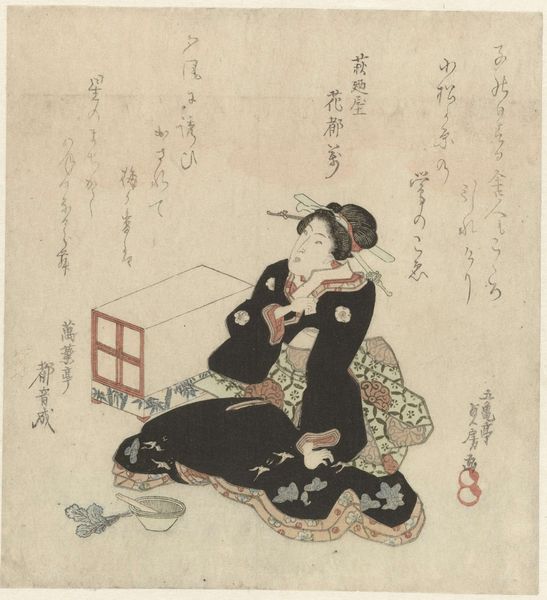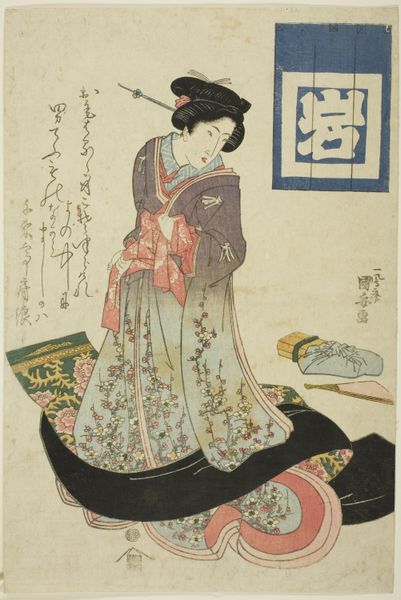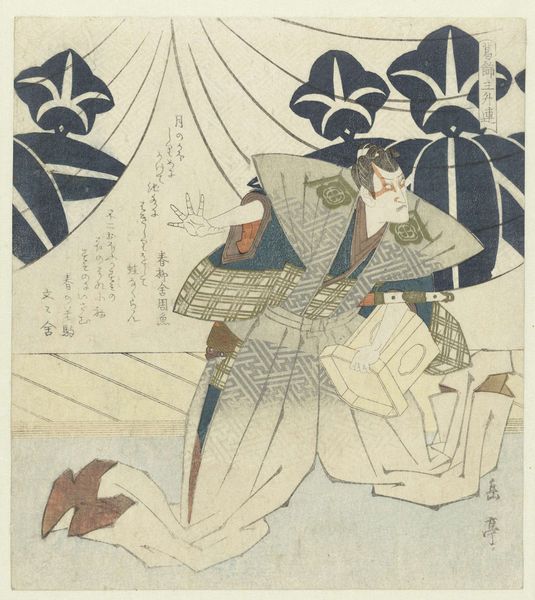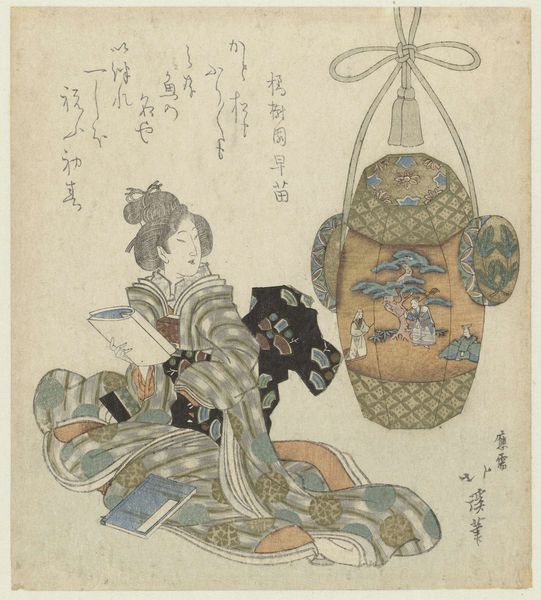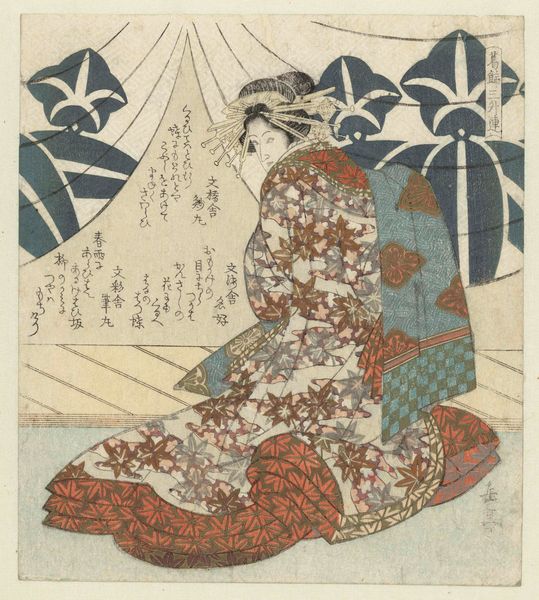
print, woodblock-print, chalk
#
portrait
# print
#
asian-art
#
ukiyo-e
#
figuration
#
woodblock-print
#
chalk
#
sketchbook drawing
Dimensions: height 211 mm, width 184 mm
Copyright: Rijks Museum: Open Domain
Curator: This captivating print, “Woman making a Sand Painting," was crafted around 1820 by Utagawa Kunisada, also known as Gototei Kunisada, one of the most successful designers of ukiyo-e woodblock prints of his age. It's currently held at the Rijksmuseum. What's your immediate response? Editor: I find the quiet, almost meditative, nature of this work so striking. There's a stillness in her posture and the scene as a whole, a sense of absorbed focus. What do you make of this mood in terms of Kunisada's overall work and the broader context of Ukiyo-e? Curator: Kunisada’s work is frequently about depicting everyday life and the fashionable figures of the Edo period. Here we see this perfectly. We also get an insight into how Kunisada negotiates traditional gender roles. The figure of a woman is a key feature in Kunisada's pieces; how he situates them can give interesting commentaries on the society he found himself in. Editor: Absolutely. Considering feminist theory and power dynamics at play within this image, it prompts several thoughts. Is she creating or destroying? Ephemeral art, like a sand painting, has an inherently transient nature, suggesting themes of impermanence and loss. How does the act of creation intersect with ideas around womanhood in Edo period Japan? Curator: These are fascinating questions. Japanese aesthetics have always heavily featured the appreciation for things in light of their transience. Thinking about Kunisada as an artist, he grew up in a society transitioning from feudalism to modernity, how would his societal consciousness reflect these traditional cultural values against changing cultural values? The prints like this became affordable due to new advancements which also influenced and expanded the reach of social and political commentaries to reach different classes. Editor: Right, that point on accessibility shifts the context. The availability of these images contributes to the democratization of art, but it simultaneously raises questions of commercialization and cultural appropriation, which complicates the reception of the work itself. Curator: Definitely, this allows a re-imagining of social interactions, how certain cultural norms might have evolved to reach contemporary forms, while we remain cognisant of all the oppressive structures that persisted in that past society and potentially find continuity across temporal existences. I am fascinated with what conversations like these enable us to have. Editor: I agree completely, placing these images in our historical narrative facilitates complex reflections on the historical evolution of the cultural landscape in the Ukiyo-e movement and more widely.
Comments
No comments
Be the first to comment and join the conversation on the ultimate creative platform.
